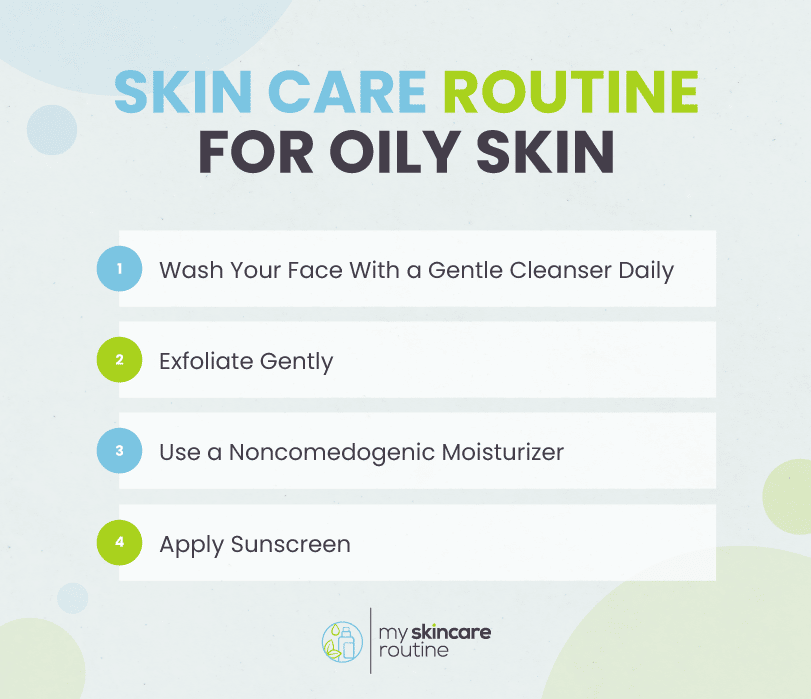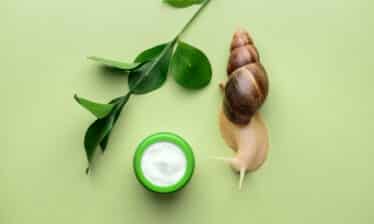If everyone’s skin reacted the same way to the stresses of daily life, skincare would be a solved problem. Unfortunately, that’s not the case. There are three main skin types: dry, oily, and “normal,” or balanced.1 Some people can also have combination skin, where part of their face feels dry, and part feels oily. Each of these skin types requires a unique skincare regimen to look and feel its best.
In particular, oily skin bothers many people. If you have oily skin, you may notice that2:
- Your skin looks shiny within an hour of washing it
- You have frequent breakouts, especially in your T-zone (forehead and nose)
- Your pores look large
- If you wear makeup, it wipes away before the end of the day
If you suspect you have oily skin, you have plenty of company. Below, you’ll learn what causes oily skin, how a skincare routine can help, and what a great skincare routine for oily skin looks like.
Why Do People Have Oily Skin?
Oily skin has many causes. The most critical factor is genetics. If your parents have oily skin, you’re more likely to have it, too. However, there are many other reasons why your skin may seem oily, such as3 ;
- Hormones. Both testosterone and estrogen are linked to oily skin. Men are more prone to oily skin in general, while women may experience monthly spikes in oiliness.
- Age. Younger people, especially teenagers, are prone to oily skin. Most people find that their skin becomes dryer as they age.
- Environment. In warmer and more humid climates, oiliness is more common. Most people feel oilier in the spring and summer because they sweat more often, producing more oil.

How a Quality Oily Skincare Regimen Can Help
No matter why your skin is oily, it can be annoying. People with oily skin are more likely to experience acne breakouts and shiny skin, which are irritating and uncomfortable.
If you have oily skin, you don’t have to accept the annoyance. Instead, you can implement an oily skincare regimen to reduce the amount of oil your skin produces. The proper skincare routine can help you:
- Reduce and prevent acne
- Look less greasy
- Make makeup last longer
- Feel more comfortable in your skin
All you need to do is find the routine that works for you.
One Simple Care Routine for Oily Skin
The trick to finding the right skincare regimen is understanding your own skin. You may need to experiment with products until you find the right combination for your face. However, the basic structure of an oily skincare regimen will always look the same. Here’s one simple routine that will help you get your oily skin under control.
1. Wash Your Face With a Gentle Cleanser Daily
If you have oily skin, it’s natural to think you need to blast away that extra grease. However, you may actually be making the situation worse by using overly harsh cleansers. If you strip away all of your facial oils, you could be damaging your skin barrier and drying out your face. To protect itself, your skin may produce even more oil, precisely the opposite of what you are trying to accomplish.4
Instead, try to use the gentlest cleanser you can find. These cleansers won’t damage your skin barrier, but they will remove excess oil and dirt. You can try time-tested products like:
- Cetaphil Daily Facial Cleanser
- CeraVe Foaming Facial Cleanser
- Neutrogena Ultra Gentle Hydrating Cleanser
- La Roche-Posay Toleriane Purifying Foaming Facial Cleanser
Wash your face with your chosen cleanser at least once a day, preferably in the evening, to rinse away the daily grime. After rinsing off the cleanser, pat your face dry with a clean cloth.
2. Exfoliant Gently
If you have a tendency for clogged pores, a light chemical exfoliant can help remove the extra grime and oil that causes blackheads. Many dermatologists recommend glycolic and salicylic acid as gentle but effective exfoliants that can help keep your skin clearer without irritating it.5 Great exfoliants include:
- Paula’s Choice Skin Perfecting 2% BHA Liquid Salicylic Acid Exfoliant
- La Roche-Posay Effaclar Medicated Gel Facial Cleanser with Salicylic Acid
- Botanic Tree Glycolic Acid Face Wash
- Caudalie Vinoperfect Dark Spot Glycolic Essence
Whatever product you choose, always follow the instructions on your exfoliants’ packaging. Some can be used daily, while others should only be used once or twice a week. The best time to exfoliate is between washing your face and putting on your moisturizer, as this lets it penetrate your skin without being wiped away.
3. Use a Noncomedogenic Moisturizer
It may seem counterintuitive to add more moisture to your face if it’s already oily. Still, remember how cleansers can overdry your face and cause it to produce more oil? That dryness can happen because of daily life too. Using a lightweight, noncomedogenic moisturizer (a moisturizer that does not block pores) can give your skin the moisture it needs and calm down your overactive oil glands.6
Some of the best moisturizers for oily skin include:
- Cetaphil Daily Hydrating Lotion with Hyaluronic Acid
- Paula’s Choice Clear Oil-Free & Lightweight Moisturizer
- La Roche Posay Effaclar Mat Anti-Shine Face Moisturizer for Oily Skin
Always moisturize directly after washing your face. This will keep your newly clean skin from losing any moisture and allow the product to sink into your skin.
4. Apply Sunscreen
If you’re going through your skincare routine in the morning, the final step should always be to apply a product with SPF protection. The sun damages your skin, even in small amounts. Using an all-day SPF product will help prevent sun damage over the long term.7 You can use great SPF products for oily skin like:
- Paula’s Choice CLEAR Ultra-Light Hydrating Oil Free Moisturizer with SPF 30
- ISDIN Eryfotona Actinica Mineral Sunscreen with SPF 50+ Zinc Oxide
- Image Skincare + Daily Matte Moisturizer, Oil Free with SPF 32
Just rub on a thin layer of your preferred sunscreen after your moisturizer has dried and you’re ready to meet the day.

Take Control of Your Oily Skin
Oily skin is annoying, but you can treat it with the right skincare regimen with help from My Skincare Routine. By using a gentle cleanser, exfoliant, moisturizer, and SPF daily, you can protect your skin and help it feel its best.
SOURCES:
- Skin Research and Technology: “Evaluation of facial skin type by sebum secretion: Discrepancies between subjective descriptions and sebum secretion.”
- Journal of Cosmetic Dermatology: “Oily sensitive skin: A review of Management Options.”
- Journal of Cosmetic Dermatology: “Oily sensitive skin: A review of Management Options.”
- Journal of Drugs in Dermatology: “Models to study skin lipids in relation to the barrier function: A modern update on models and methodologies evaluating skin barrier function.”
- Clinics in Dermatology: “Clinical and cosmeceutical uses of hydroxyacids.”
- Journal of Cosmetic Dermatology: “Oily sensitive skin: A review of Management Options.”
- Journal of Cosmetic Dermatology: “Oily sensitive skin: A review of Management Options.”






